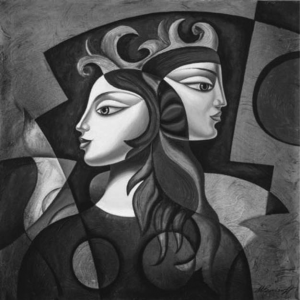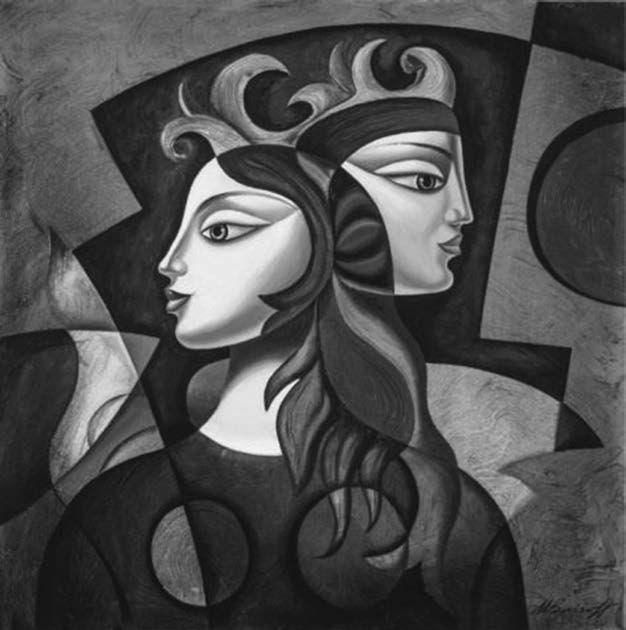
.jpg) Dr. M. D. Thomas
Dr. M. D. Thomas

Diversity is the characteristic mark of the entire creation, human beings in special. Diversity implies two things – being many and being different. ‘Many’ refers to being more than one. ‘Different’ denotes the distinctiveness of someone or something.
‘Manyness’ signifies the pluralistic character of life and nature. ‘Difference’ characterizes the uniqueness of every item, as well. Both dimensions together define what life is. Being many or different is never a negative factor. Both are positive elements.
The world of vegetation, animals and of the humans are full of diversity. Diversity keeps increasing, unimaginably so. The ever-emerging newness in the beings keeps energizing the human imagination. In actual fact, variety is the spice of life.
Male and female are the basis of diversity. They have the clearest differences. Even so, they complement each other totally. ‘One completes the other’ is the logic. Their complementariness is a culture by itself, which covers all the three worlds.
Masculine and feminine genders are clearly different, physically, intellectually, psychologically, spiritually and socially. These differences are with a due purpose. They keep sharing in the creative role of the Creator, eternally so.
The sex-related difference is the most major difference in life. And that is entirely complementary. The gender difference is a model for other genealogical and other differences in all beings. They are and should be complementary in their mutual relation, as well.
It is seen that the human society, in India in special, is slow in recognizing the equal space of genders in life. The female gender is preyed upon in various ways. Female voice is often suppressed. Women are repeatedly a victim of violence. The God-given due space of women has to be granted, necessarily so.
The human society is full of differences, like language, ethnicity, race, caste, class, creed, as well as social mores and cultural traditions. A culture of complementariness has to permeate through the diverse layers and recesses of social life.
Besides, considerations of high and low are so prevalent in the Indian society, in terms of caste, gender, literacy, poverty, and the like. This is a grave social evil. Such disparity has to be treated with strictness. Dignity of the human being has to be the norm of value.
Religion often becomes a reason for discrimination, division, hatred and distance. This is unpardonable. Instead, religion has to be a tool for unity. ‘Whatever be the religion, it suffices if one is a good human being’, says Narayan Guru of Kerala. Human worth matters most, very truly.
There is a tendency to consider religions totally independent entities. This is not right. This leads to extremism, too. Religion is one as a phenomenon. They are to be understood as branches of the same tree. They are complementary, one to another, too.
Nationalism, of late, is seen a cause of division. Extreme thoughts regarding the nation are divisive. A moderate view about the nation is good enough. Patriotism has to be balanced, reasonable and justifiable. Complementary spirit has to govern the citizens.
The political sector has ruling and opposition parties. In reality, they are ruling and non-ruling parties. Opposition has not to be understood in the negative sense. All the MPs and MLAs are elected by the people. Together, they rule the country. They are complementary.
Past, present and future are mutually complementary, too. Time is the common factor among them. The presence of all the three of them in life has to be balanced. There is a tendency of past overloading the present and the future. This has to be avoided.
There are conservatives and progressives in the human society. Often conservatives run the show of life and progressives are seen choked or sidelined. Conservatives are past-ridden and progressives are future-oriented. A sense of balance has to be maintained between them.
Senior and junior are two halves of the human society and the entire world. That is the way of life. They are complementary to each other. They have to interact with each other closely. They have to thoroughly collaborate with each other for making life, even better as well.
‘Made for each other’ is an ideal that can sustain the principle of complementariness. Dovetailing the double-edged facets of life is urgently necessary. Plus and minus are to be mutually adjusted. A sense of completion must be the ultimate ideal of life.
The principle of dialogue between ideologies and outlooks has to direct the course of life in the society. One-sided behaviour tends to excess, immoderation or fanaticism and that has to be regulated. The participation of all has to be ensured. Democracy has to be the policy of life.
Dialogue would mean ‘between or among’ the individual humans, institutions, communities and nations. A culture of ‘inter’ has to be promoted. Give and take, along with participatory, collaborative, dialogical and harmonious ways have to be in the swim.
The modern phenomenon of inter-faith relations has to be engaged with. To get into the shoe of the other and to see the world from the skin of the other is an art. This art will promote friendship and fellowship, and eventually a complementary style of life.
How could complementariness be a culture of life, in all the areas of the humans? Individual friendships have to be strengthened. Relations among people of diverse communities have to be promoted. Festivals of all religions have to be celebrated together. Places of worship of other religions have to be visited, too.
A spirit of complementariness has to permeate in to the day-to-day life of the citizens of the country, and among institutions, sectors and communities. This is the way to harmonious and peaceful living in social life, to a brighter future of one and all, as well, within the country and the world beyond.